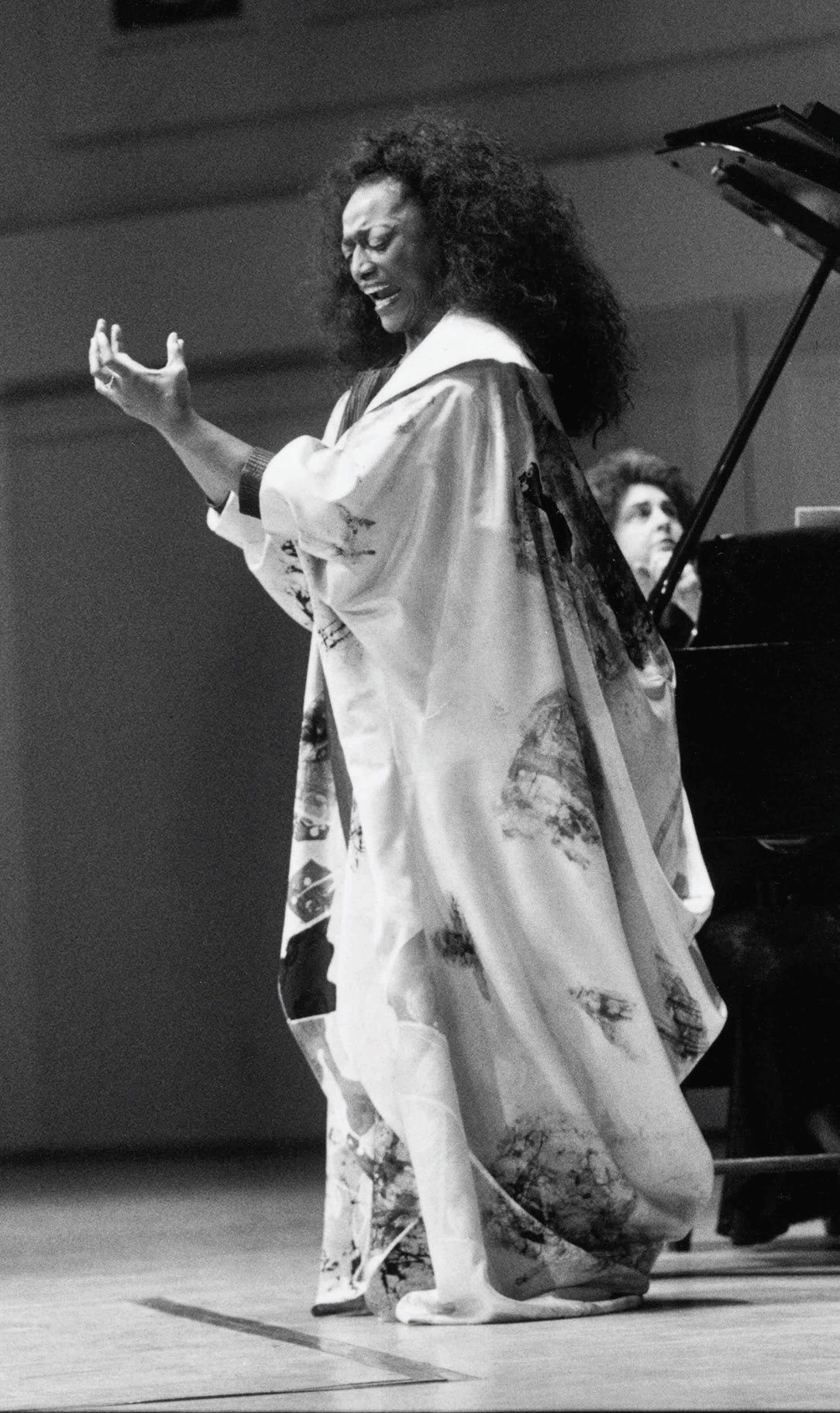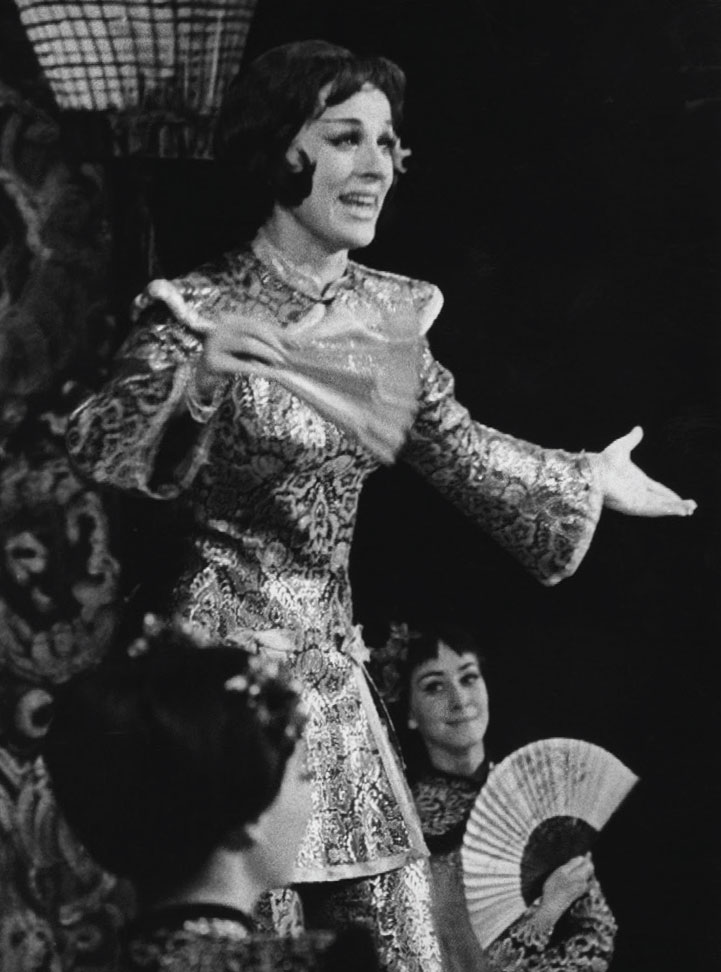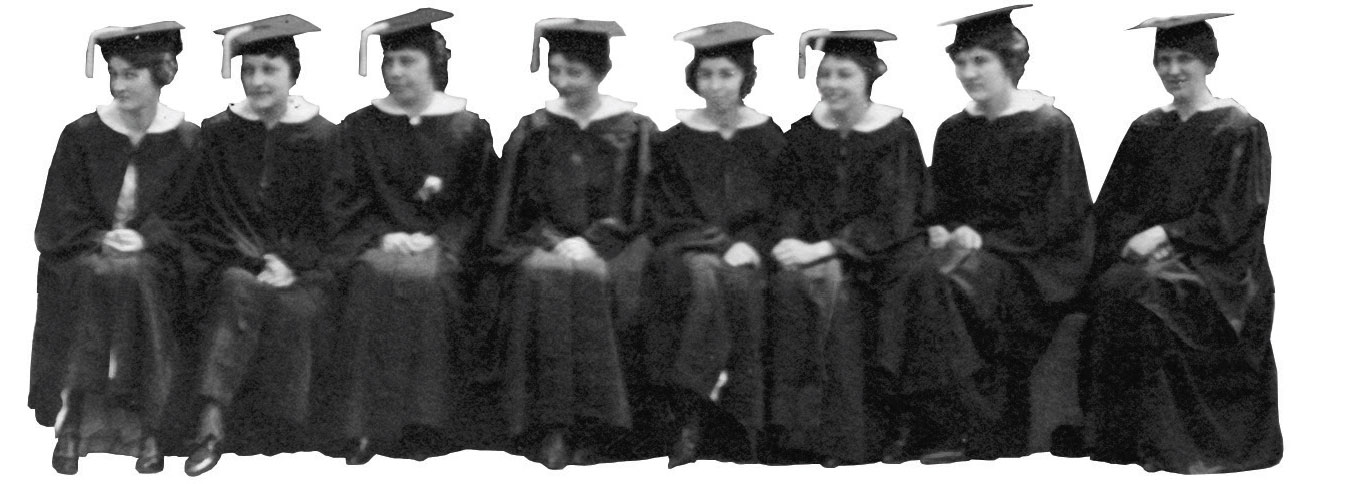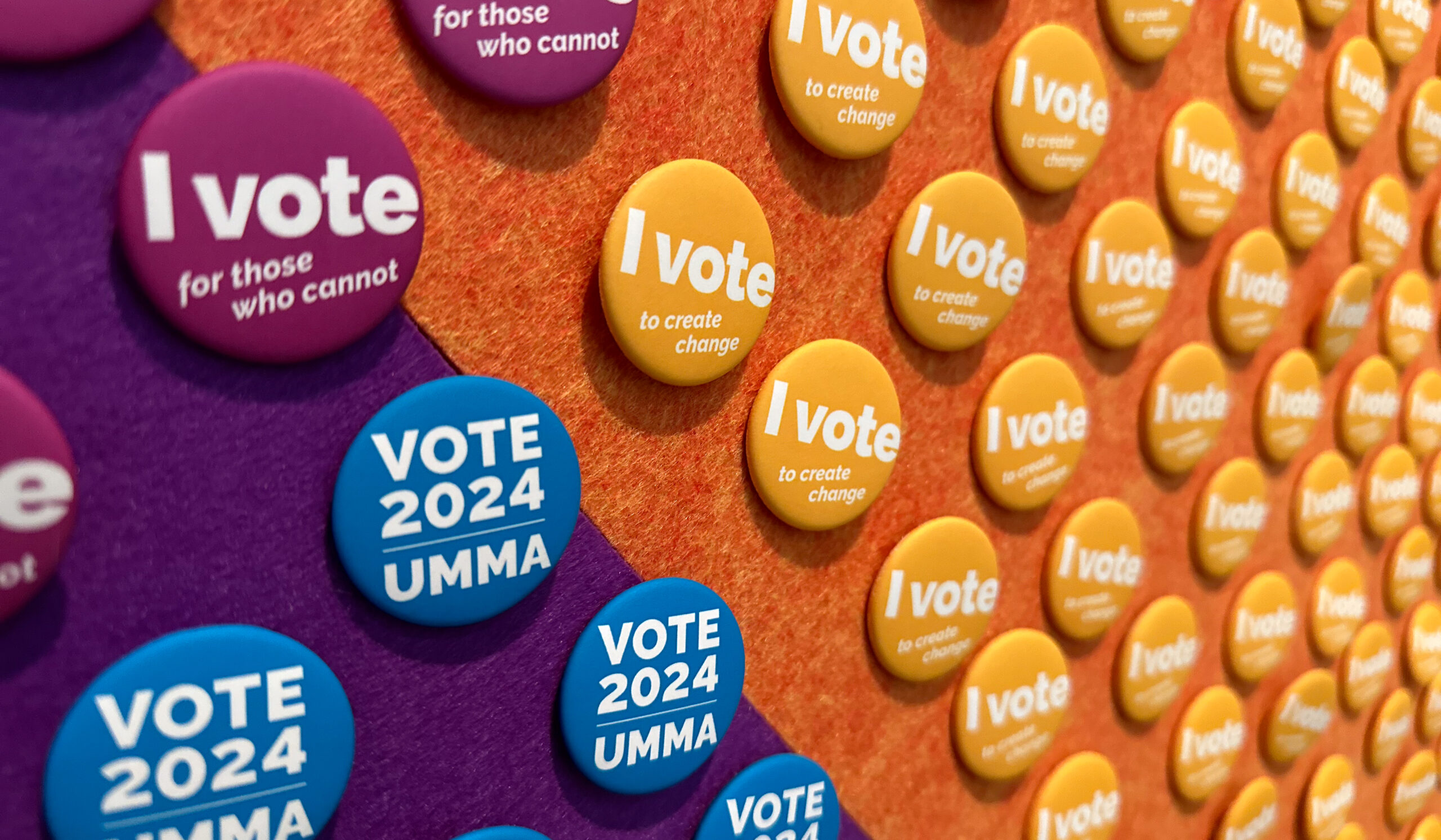For 137 seasons, the University Musical Society has presented performances from classical music to modern dance and jazz, making Ann Arbor a destination for world-renowned artists.
This wasn’t the sort of performance where you sidle to your seat in a vast auditorium and idly page through your program until the curtain rises. When the National Theatre of Scotland staged “A Christmas Carol” in Ann Arbor this winter, it defamiliarized a favorite fable by emphasizing its darker tones, brilliantly using puppetry to awaken the spirits. Most of all, it created a surprisingly intimate relationship with audiences.

Tickets were limited to 150 people. Guests were led through backstage hallways and down staircases before entering — only four or five people at a time — through an ornate, lamplit doorway. When they stepped through, they walked into Scrooge’s cluttered office, lined with looming shelves of weathered books and rolls of yellowed paper tucked into pigeonholes. Five costumed performers, their faces streaked white with makeup, greeted guests with a bit of buoyant improv: a dance, a hug, a pantomime.
Nearly all 26 performances sold out, and it wasn’t just children who pressed their palms to their cheeks in awe at the clever staging of an old story made new.
It’s a testament to the community’s trust in the University Musical Society, which has presented the performing arts since 1879. Thousands of miles from the artistic epicenters on the coasts, UMS has made a mid-size Midwestern town a destination for the greatest artists in the world.
“We are a town-grown organization from the beginning,” says Ken Fischer, MA’67, UMS president.
Its extraordinary track record was recognized in September with the National Medal of Arts, the highest honor given to artists and arts patrons by the United States government. UMS is the first university-based presenter to be so honored. George Shirley, a UMS board member and U-M professor emeritus, also received a medal.
“It was a great honor, and we certainly got a tremendous amount of appreciation from others in our field,” Fischer says. “Really, the award belongs to everybody who has ever worked at this organization, or attended our events, and made it what it is.”
Thousands of miles from the artistic epicenters on the coasts, UMS has made a mid-size Midwestern town a destination for the greatest artists in the world.
It is the astonishing consistency of high quality UMS events that stands out over its 137 seasons. But at the same time, the organization had to adapt in order to thrive. It has held true to its roots in classical choral and orchestral music while introducing more modern dance, theater, and jazz. While the Power Center, Rackham Auditorium, and Hill Auditorium have long been its primary venues, UMS has branched out to unconventional spaces around the region, like Downtown Home & Garden in Ann Arbor, Corner Brewery in Ypsilanti, and the Detroit Opera House. At the Michigan Theater, UMS hosts high-definition live-streams of performances from the National Theatre in London.

And, significantly, UMS has grown larger and more diverse since Fischer became president in 1987.
“My feeling is that it was unacceptable for this organization to not reflect the character of the communities it serves,” Fischer says. “I saw in our offices in Burton Memorial Tower — literally an ivory tower — that there was always this high standard, this sense that we needed to go it alone because our standards are so much higher than everyone else’s.”
But Fischer pivoted by demonstrating how more expansive programming, implemented in partnerships with what UMS calls “communities of shared heritage,” deepen the organization in every way.
The results have been impressive. UMS has significantly expanded its reach beyond the concert halls by weaving the arts throughout the campus and Ann Arbor communities. This both deepens the influence of visiting artists and builds audiences for the arts in the future. The organization also has amped up its online offerings, including the launch of UMS Rewind, a portal where details on every performance since 1879 are logged, often including a digitized version of the original programs. It is freely available to the public.
The New York Philharmonic performed the first of its 18 concerts in Hill Auditorium in 1916. But in 2015, the partnership expanded when UMS launched an ambitious five-year orchestra residency project. In addition to performances, the guest orchestra helps create a multifaceted program of lectures, master classes, and workshops.
The Philharmonic began its first residency in October, when the brass section performed at the Big House during halftime of the homecoming game and the orchestra presented a rare rendition of Leonard Bernstein’s live score to the 1954 film “On the Waterfront.” Total attendance across three additional performances at Hill was 7,945, with students purchasing more than 2,250 tickets. The orchestra returns in 2017 and 2019, and the Berlin Philharmonic begins its residency in fall 2016.

Ed Yim, the New York Philharmonic’s vice president for artistic planning, said the orchestra “enjoys a very creative, committed, and caring relationship with UMS, one of our favorite institutional partners.” UMS is one of only three organizations in the world with which the Philharmonic shares such a high-level partnership. “The performers look forward to coming to Ann Arbor,” Yim says. “It’s like our second home.”
What keeps the orchestra’s interest is that they aren’t just performing a series of programs; they generate new projects from the ground up. “Ann Arbor and the students in the community have a developmental role to play in new orchestral forms for the future,” Yim says, referring to different types of musical compositions. “That’s the level we’re talking about.”
That spirit of co-creation fuels the work of Jim Leija, ’02, MFA’07, director of education and community engagement for UMS. In his eight years with the organization, it has adapted to a changing media and artistic landscape — fewer press releases, more direct outreach. Leija helped launch UMS Lobby, an online community that invites patrons to discuss shows they’ve just seen.

Under Leija’s leadership, the organization provides instructional support for “Engaging Performance,” a survey course designed to enhance arts literacy among non-arts students. Seven UMS performances form the core text of the class.
UMS also launched the Mellon Institute on Arts-Academic Integration, which offers fellowships that train academics on bringing the strategies of arts experience into their classrooms. In total, UMS has partnered with more than 70 academic units and 200 faculty members.
“The idea is that the University is the last stop on the education train for most people,” Leija says. “It’s their last opportunity to learn about how the arts might be part of their lives and how important it can be to them, professionally and personally. It’s not about making artists. It’s about creating people who are curious and interested in creative expression as a meaningful part of their lives.”
One of the organization’s signature community engagement programs is the UMS Night School. Open to the public and held at the Alumni Center, it is a free series of 90-minute classes that combine lectures from genre experts, group discussion, and interactive exercises that connect with an integrating theme in UMS performances.
“It’s not about making artists. It’s about creating people who are curious and interested in creative expression as a meaningful part of their lives.”
Altogether, there are up to 150 additional education experiences each season, hosted alongside about 65 feature performances. That kind of ambitious coordination has succeeded under Fischer’s strong management. But UMS will undergo its first change in leadership in 30 years when he retires in June 2017.

As Fischer prepares for that day, what he would most like to see in the future is for UMS to be housed under one roof; staff is currently split among three buildings. While Hill Auditorium had significant upgrades scarcely 10 years ago, Fischer wants it to become an even more modern venue with the addition of a backstage, space for educational and social activities, and a permanent UMS office. He adds that a key kind of performance space — a black box theater, with an open floor space for moveable staging — is also still missing from the local landscape.
“To be the best in the world at what we do, and yet be in a small town, requires resources,” Fischer says. To that end, UMS is raising $50 million by the end of 2018; to date, it is 62 percent of the way toward its goal. In that way, as well as in strong support for its varied program, Fischer said that he sees a powerful demonstration of how the community and the University prize the arts.
“We go into (our work) with an open mind, humility, and curiosity,” Fischer says. “It’s an honor to do what we do.”
1879 The first performance of Handel’s “Messiah” by a group of Ann Arbor residents and University community members known as the Choral Union. UMS has performed this oratorio every year since then. The first performance of Handel’s “Messiah” by a group of Ann Arbor residents and University community members known as the Choral Union. UMS has performed this oratorio every year since then. |
1880 The University Musical Society is established, comprising the Choral Union and the University orchestra. |
| 1881 The Ann Arbor School of Music comes under the umbrella of UMS, which confers degrees to students. AASM is later renamed the University School of Music.  |
1894 UMS hosts the first annual May Festival to celebrate the arrival of the Frieze Memorial Organ in Ann Arbor. It’s so successful that it ignites discussions about building a new concert hall. |
| 1913 Hill Auditorium opens. Designed by Albert Kahn, the genius behind many University buildings, it boasts uncommonly excellent acoustical design. |
1918-19 Pianist Sergei Prokofiev (right) and tenor Enrico Caruso are among those who perform at Hill, solidifying UMS’s reputation as a top-tier arts presenter. |
| 1929 The University School of Music becomes a unit of the University. UMS administers the school. |
1940 The School of Music becomes an autonomous part of the University, separate from UMS. UMS receives office space in Burton Memorial Tower. |
| 1971 The Power Center for the Performing Arts opens with the world premiere of “The Grass Harp,” based on a Truman Capote novel. |
1987 Ken Fischer becomes only the sixth person to head UMS since 1891. In April, he announced that he’ll retire on June 30, 2017. |
| 1995 After the University changes the academic calendar so that the semester ends in April, UMS retires the May Festival after more than 100 years. |
2001 UMS hosts the first of several Royal Shakespeare Company residencies, making U-M the first U.S. university to partner with RSC. In 2006, actor Patrick Stewart conducts the marching band at the Big House. |
| 2007 UMS receives the first APAP/MetLife Award for Increasing Arts Access in Underserved Communities. |
2014 JULY – UMS Rewind debuts as a digital archive of performances. |
| 2014 SEPTEMBER – UMS and George Shirley, emeritus professor of the School of Music, Theatre & Dance, receive the National Medal of Arts. UMS is the first university presenter to be so honored. |
2014 DECEMBER – UMS announces five-year orchestra residency program to begin in the 2015-16 season with the New York Philharmonic. |
Anna Clark, ’03, is an independent journalist living in Detroit. She has written for the New Republic and NBC News online, among other publications. She is a former Fulbright fellow in Kenya and, in 2012, founded Literary Detroit.





